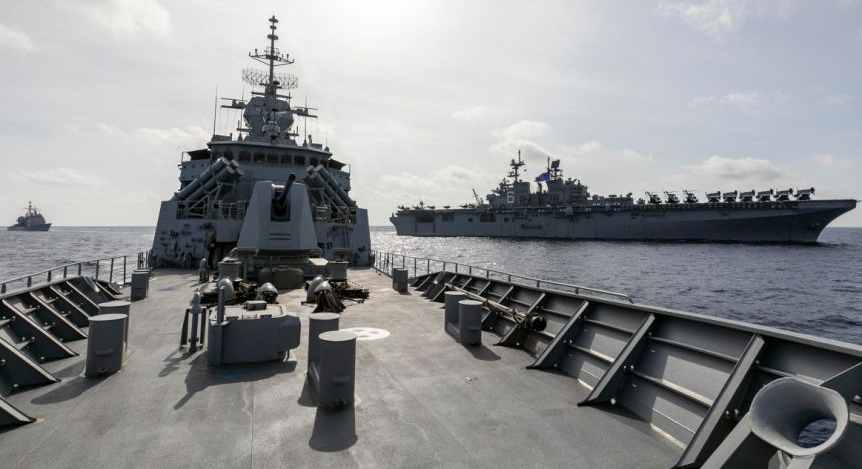The U.S. just declassified a report outlining its strategy to counter China’s dominance

At a time when the American news cycle is dominated by the coronavirus pandemic, politics, and the ongoing censorship of free speech by the Big Tech companies, the U.S. government unexpectedly released a highly declassified a foreign-policy document that lays out the U.S. strategy to counter China’s dominance.
While major US media is relatively silent, this highly sensitive national security document is already generating headlines in Japan, Australia, and other regional publications. The document provides the details of Trump administration’s strategy for the Indo-Pacific region, including to defend, dominate, and deny Chinese military expansion. Not surprisingly, the strategy also focuses on providing support to the Taiwanese government.
The declassification of the document was first brought to public attention in a tweet posted earlier today by TRT World Research Centre, a non-profit research and policy institute, providing thorough analysis and understanding on regional and international issues. In a tweet, TWT World Research Centre said:
“The #US has declassified a report outlining its strategy in the Indo-Pacific region, focusing on countering #Chinese dominance, including providing support to the #Taiwanese government. For background on #China-#Taiwan tensions (and the US role), read: http://bit.ly/2JSgL1f”
The #US has declassified a report outlining its strategy in the Indo-Pacific region, focusing on countering #Chinese dominance, including providing support to the #Taiwanese government. For background on #China–#Taiwan tensions (and the US role), read: https://t.co/gJut3CIBKN pic.twitter.com/rxB2ZNZ0zF
— TRT World Research Centre (@TRTWorldRC) January 13, 2021
According to security experts, the high-security document, which underlines U.S. stance towards China, was previously classified “SECRET” and “not for release to foreign nationals.” In releasing the full text, with the exceptions of a few minimal redactions, the document has been made public a full thirty years early, according to standard declassification and public records procedures.
“This is a highly significant document. It’s extraordinary that it’s been released decades early,” Rory Medcalf, head of the National Security College at Australia National University, said.
The ten-page strategy document reveals that the US Indo-Pacific strategy was heavily influenced by both Australia and Japan, and was not forced on them. The document also identifies the following as a top national security challenge: “How to maintain U.S. strategic primacy in the Indo-Pacific region and promote a liberal economic order while preventing China from establishing new, illiberal spheres of influence.”

Rory Medcalf added:
“I think it’s a signal about the kind of continuity that the permanent government of America, or if you like the officials, want to see in America’s relations with the Indo-Pacific, including in managing China’s power.”
As ABC News Australia also reported, the document commits the US to “devise and implement a defence strategy capable of, but not limited to: (1) denying China sustained air and sea dominance inside the ‘first island chain’ in a conflict; (2) defending the first island chain nations, including Taiwan; and (3) dominating all domains outside the first island chain”.
“To say that this will not go down well with China, or that China will not be happy that Australia and Japan helped drive this, is an understatement.”
With just about 7 days left in his presidency, Laura Tingle of ABC News Australia said the highly unusual release of this document “reveals those involved in running US policy want to make sure the strategic architecture is explicit and on the public record.”
Meanwhile, in a statement posted on WhiteHouse.Gov, U.S. National Security Advisor Robert C. O’Brien said:
“Today, the White House is publishing the recently declassified United States Strategic Framework for the Indo-Pacific. For the last 3 years, this document has provided overarching strategic guidance for implementing the 2017 National Security Strategy within the world’s most populous and economically dynamic region. Approved in February 2018 for implementation across Executive Branch departments and agencies, the document is being released to communicate to the American people and to our allies and partners, the enduring commitment of the United States to keeping the Indo-Pacific region free and open long into the future.”
You can read O’Brien’s full statement here.
You can also read United States Strategic Framework for the Indo-Pacific at the WhitHouse.Gov website.

